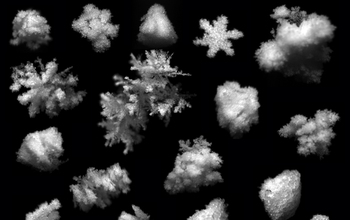Impact
Safer winter driving with snowflake imaging
Camera system captures critical data about falling snowflakes which can help improve weather radars and snowfall prediction accuracy
October 4, 2017
This material is available primarily for archival purposes. Telephone numbers or other contact information may be out of date; please see current contact information at media contacts.
Falling snow makes winter driving a challenge. Transportation planners, road crews and emergency managers can now estimate real-time accumulations with active imaging from multi-angle snowflake cameras (MASC). NSF-funded research led to development of MASC, which images snowflakes down to the diameter of a human hair and simultaneously measures how fast they fall. These data have been critical for verifying snowfall predictions and winter precipitation algorithms for weather radars.
NSF Directorate(s):
Directorate for Geosciences
Locations
Utah
Related Awards
#1127692 Collaborative Research: The Wasatch Hydrometeor Aggregation and Riming Experiment
#1417234 STTR Phase I: Development of a Freefall Precipitation Camera for Weather Monitoring Systems
#1531930 Collaborative Research: Impact of Snowfall Processes on Potential Vorticity Generation in High-Latitude Snow Events
Related Websites
The Multi-angle Snowflake Camera: https://www.nsf.gov/cgi-bin/good-bye?http://www.inscc.utah.edu/~tgarrett/Snowflakes/MASC.html
Camera Captures Falling Snowflakes in 3-D: https://www.nsf.gov/cgi-bin/good-bye?https://www.livescience.com/26369-cameras-capture-falling-snowflakes-in-3d.html
This NSF Impact is one of thousands of research outcomes made possible by NSF that help fuel the U.S. economy, enhance national security and sustain U.S. global leadership by advancing knowledge. You can search for more NSF Impacts at https://www.nsf.gov/impacts.
Get Impacts by Email



